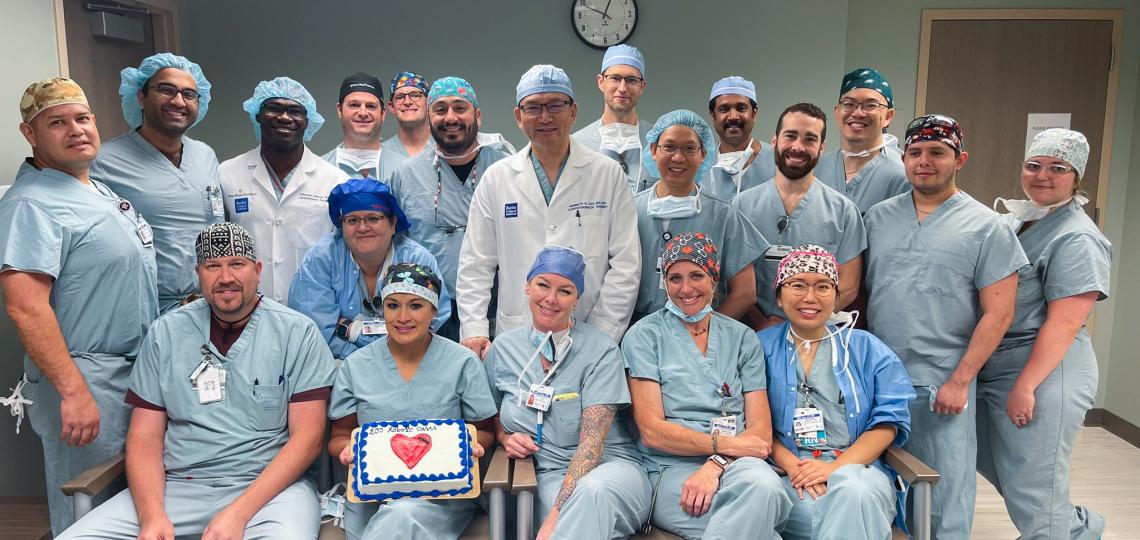Robotic Heart Surgery Procedure Leads United States in Program Growth

Dr. Kenneth Liao, chief of the Division of Cardiothoracic Transplantation and Circulatory Support, recently completed his 200th robotic cardiac surgery. In 2019 Dr. Liao joined the Baylor faculty and started the robotic cardiac surgery practice at Baylor St. Luke’s medical center. His team has successfully performed a wide range of robotic cardiac surgeries including mitral valve and tricuspid valve repair, coronary artery bypass, cardiac tumor resection, cardiac defect repair, MAZE procedures, left atrial appendage ligation, epicardial pacing lead insertion and pericardial resection. Under his leadership, the Baylor robotic cardiac practice has expanded rapidly during the past two years and it completed the most recent 100 robotic cases using only half of the time it took to complete the first 100 cases. Such practice growth and volume has made Baylor’s program the fastest growing robotic cardiac program in the United States and placed us among the top 10 robotic cardiac programs in the country. Baylor St. Luke’s hospital is among a handful of hospitals in the United States that has an intuitive robot designated for cardiac use and is the only hospital in the Greater Houston area to provide robotic cardiac surgery services to its patients.

Dr. Liao embraced the robotic surgical technology in early 2000 shortly after the United States Food and Drug Administration approved it for use on humans. He is among only a handful of cardiac surgeons in the world who are versatile in performing a wide range of robotic cardiac procedures from valve repair to coronary artery bypass. As the thought leader in robotic cardiac surgery, he authored “Operative Technique for Robotic Assisted Coronary Artery Bypass” in AATS’ official journal and recently his team at Baylor presented their work “Using peripheral ECMO to expand Robotic CABG indications in high risk patients” at the 2021 AATS Annual Meeting. During robotic cardiac surgery, only trocar ports or one-two inch incisions are made in the chest through the rib spaces instead of cutting the sternum and breaking the breastbone. The robot’s fine instruments and high-definition 3D images allow the surgeons to perform very fine surgical maneuvers within a small space in the chest to repair the valve or cardiac defects, resect benign tumors and mobilize chest wall arteries for coronary artery bypass. The benefits of robotic cardiac surgery include less bleeding, less blood transfusion, lower risk of wound infection, shorter recovery time and lower risk of stroke.










